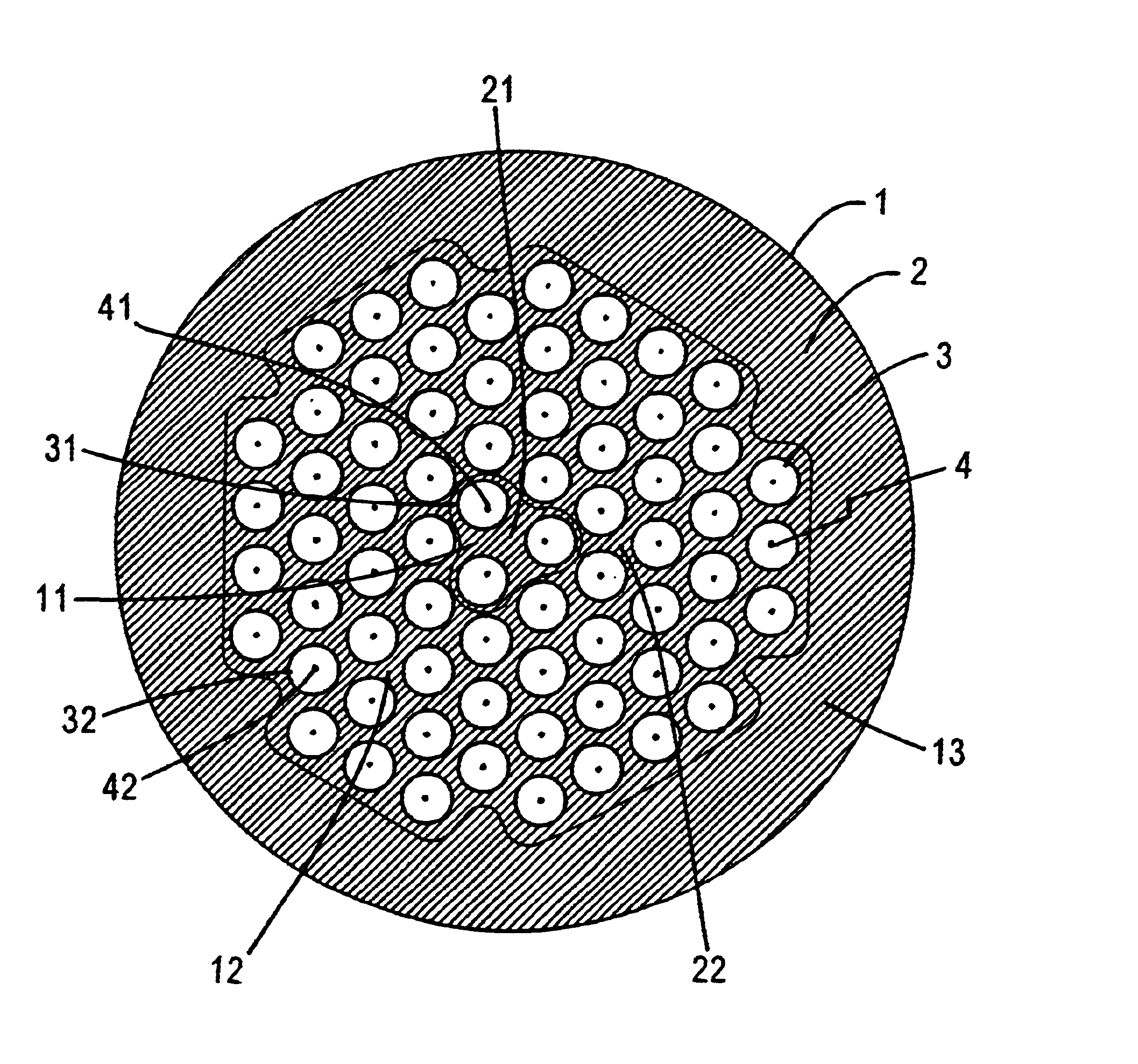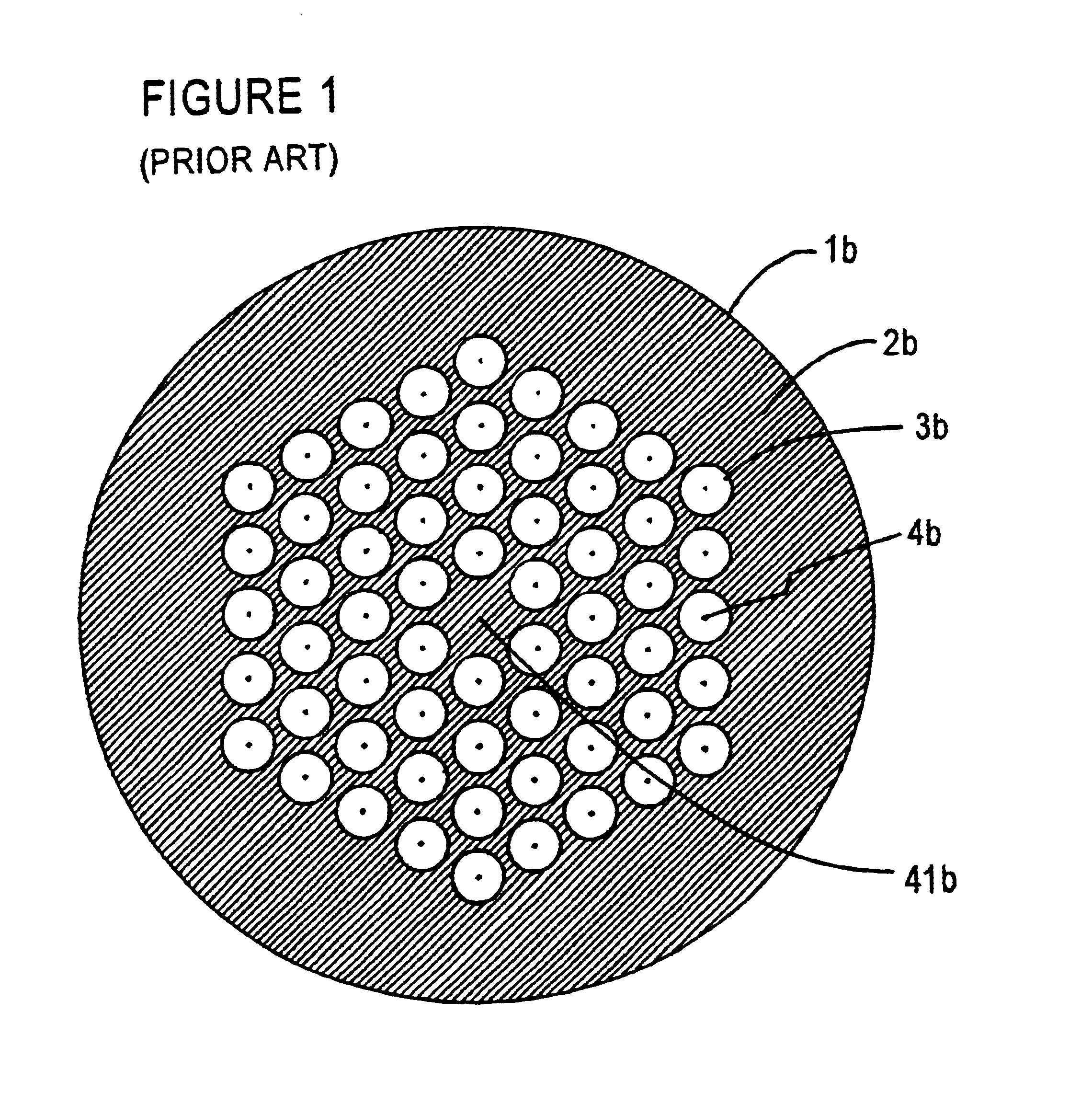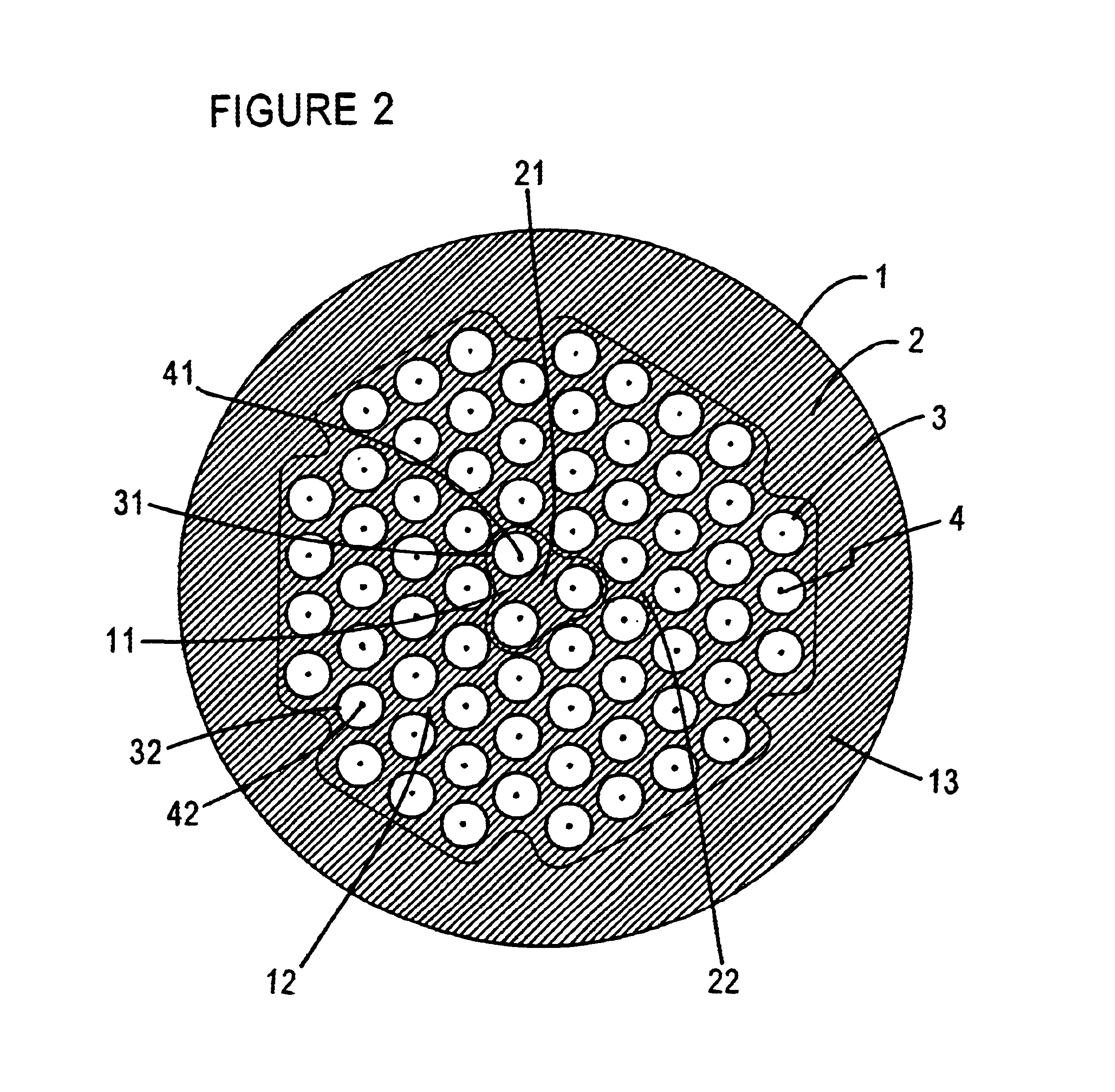Microstructured optical fiber and method of making
a microstructured optical fiber and fiber technology, applied in the field of fiber optic waveguides, can solve the problem that the sub medium is not necessarily able to constitute an optical fiber by itself, and achieve the effects of reducing the influence of surface tension, small effective core area, and increasing curvature radii
- Summary
- Abstract
- Description
- Claims
- Application Information
AI Technical Summary
Benefits of technology
Problems solved by technology
Method used
Image
Examples
first embodiment
FIG. 2 shows the cross section of an optical fiber 1 of the present invention, in which a plurality of holes 3, which are sub medium regions, are arranged in silica glass 2, which is a main medium. The cross section has an inner region 11 and an outer region 12 surrounding the inner region. The arrangement of the holes is substantially a hexagonal lattice. In the outer region, the centers of the holes 32 substantially coincide with the outer lattice points 42, which are a part of the lattice points 4 of a hexagonal lattice and are located in the outer region. On the other hand, in the inner region, the centers of the holes 31 are apart from the inner lattice points 41 by approximately 0.1 lattice period outward. The inner lattice points are a part of the lattice points 4 of the hexagonal lattice and are located in the inner region. The diameters of the holes 31 and 32 are substantially uniform in the cross section. For each lattice cell of the lattice point 41 or 42, a single hole 3...
second embodiment
FIG. 6 shows the cross section of an optical fiber 1a of the present invention. In this structure, a plurality of holes 3a are arranged in silica glass 2a, and the holes 32a in the outer region 12a are arranged so that there centers coincide with respective lattice points 42a, which are a part of the lattice points 4a of a hexagonal lattice and located in the outer region, and consequently the arrangement possesses a two-dimensional translational symmetry. Other media having appropriate refractive indices may be used in lieu of holes. Because of the two-dimensional translational symmetry, it is possible to localize a lightwave in the inner region 11a by Bragg reflection and guide it over the fiber. Since the arrangement of the holes 32a is periodical in the outer region 12a, the outer region 12a can reflect a lightwave belonging to a certain range of frequencies and propagation constant by Bragg reflection. Although such a lightwave cannot propagate in the outer region 12a, since th...
third embodiment
FIG. 8 shows the cross section of an optical fiber 1c of the invention. In the optical fiber 1c, a plurality of holes 3c are arranged in silica glass 2c. The cross section has an inner region 11c and an outer region 12c surrounding the inner region. In this embodiment, the arrangement of the holes is substantially a square lattice. In the outer region 12c, the centers of holes 32c are located at the outer lattice points 42c, which are a part of lattice points 4c of the square lattice and are located in the outer region 12c. On the other hand, in the inner region 11c, the centers of holes 31c are located apart from the inner lattice points 41c by approximately 0.1 lattice period outward. The inner lattice points 41c are a part of lattice points 4c of square lattice and are located in the inner region 11c. For each lattice cell of the lattice point 41c or 42c, a single hole 31c or 32c has its center in the cell. The outer region 12c is further surrounded by a jacket region 13c. Althou...
PUM
| Property | Measurement | Unit |
|---|---|---|
| radii | aaaaa | aaaaa |
| curvature radii | aaaaa | aaaaa |
| curvature radii | aaaaa | aaaaa |
Abstract
Description
Claims
Application Information
 Login to View More
Login to View More - R&D
- Intellectual Property
- Life Sciences
- Materials
- Tech Scout
- Unparalleled Data Quality
- Higher Quality Content
- 60% Fewer Hallucinations
Browse by: Latest US Patents, China's latest patents, Technical Efficacy Thesaurus, Application Domain, Technology Topic, Popular Technical Reports.
© 2025 PatSnap. All rights reserved.Legal|Privacy policy|Modern Slavery Act Transparency Statement|Sitemap|About US| Contact US: help@patsnap.com



